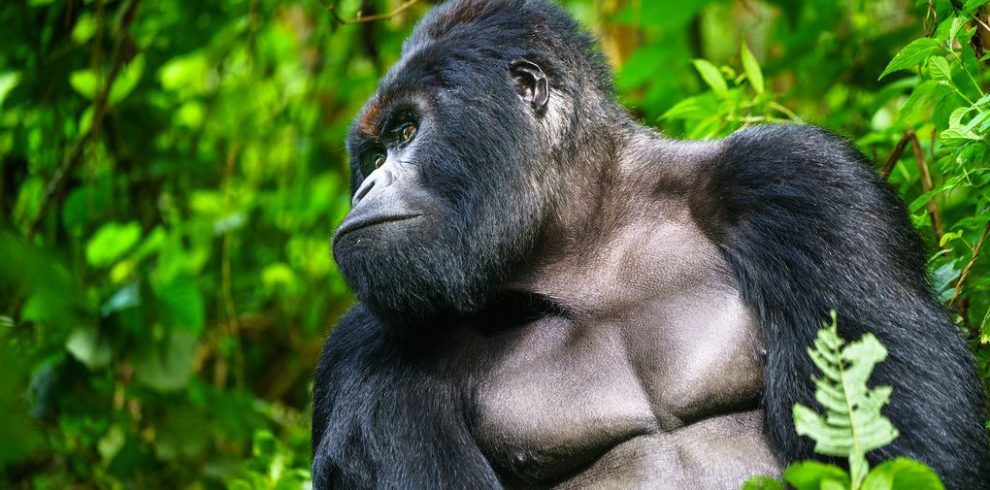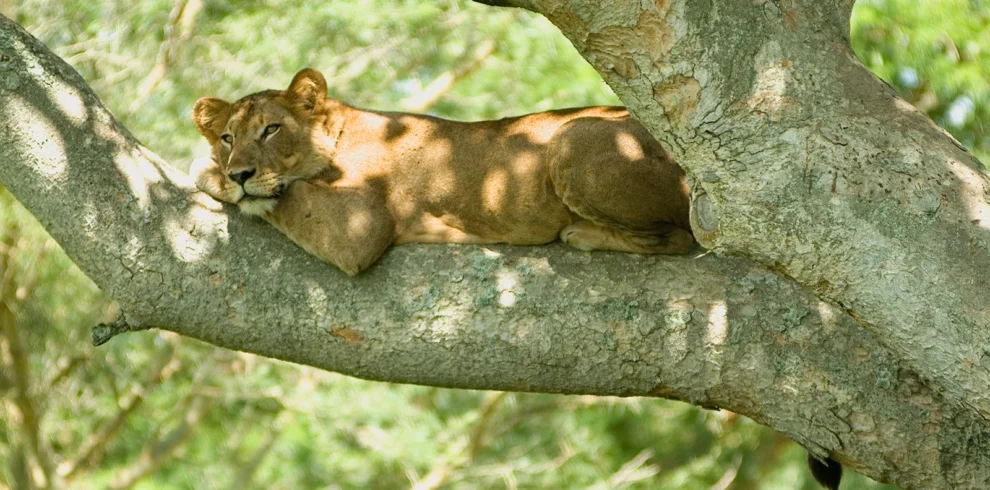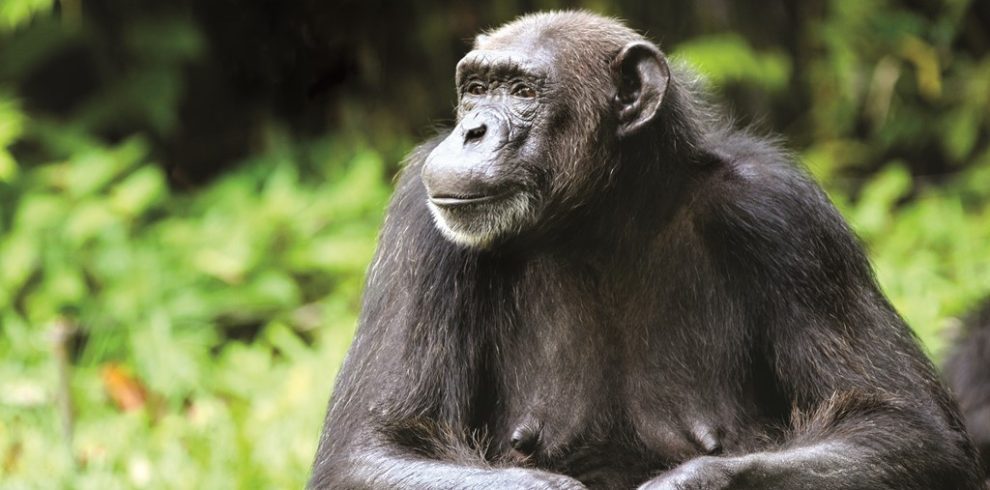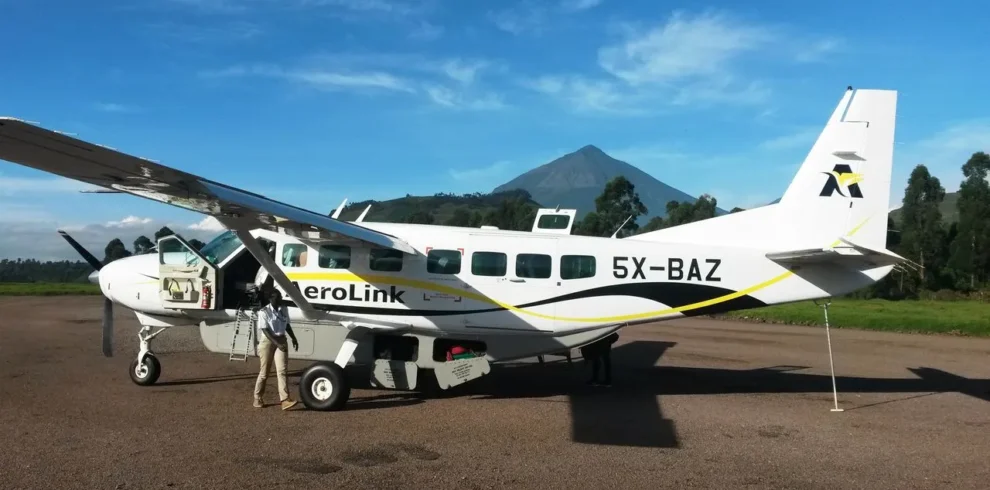Table of Contents
ToggleGorilla Habituation Experience in Bwindi Impenetrable Forest, Uganda
Regular gorilla trekking tours normally offers just one precious hour with gorillas after encountering them. But Uganda is offering unique extended mountain gorilla adventure known as Gorilla Habituation Experience.
What is a gorilla habituation experience, and how does it differ from a regular gorilla trek? We have got all the information you need to know, as well as advice on what to pack, where to stay, how much it costs, and other such details to help you plan a fantastic adventure!
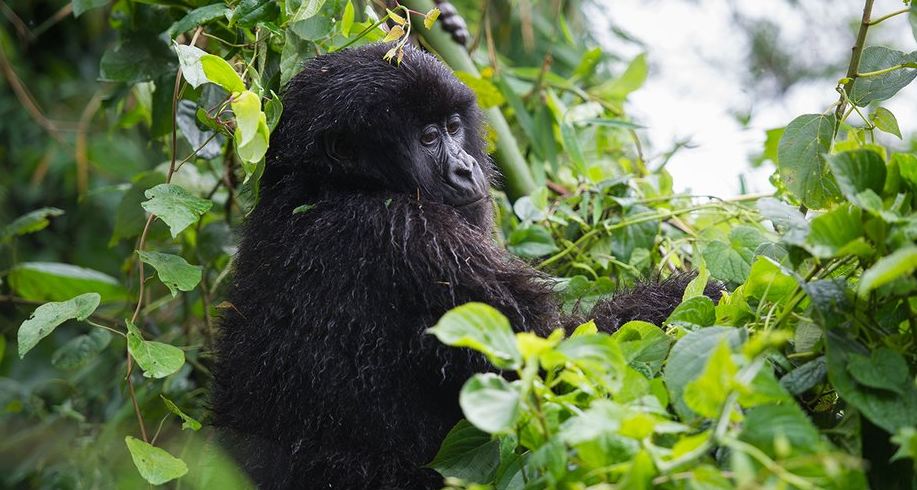
Mountain gorillas
Only 1063 or so mountain gorillas live in the rainforests jungles of southwestern Uganda’s Bwindi Impenetrable National Park and the Virunga Volcanoes that span the borders of Uganda, Rwanda and DR Congo. They are found nowhere else on the planet.
Once on the brink of extinction, their survival is one of the greatest conservation success stories in Africa. George Schaller, the famous mammologist – was the first to research gorillas in the late 1950s.
But it was Dian Fossey- an American Primatologist- who brought their plight to international attention, studying them for 18 years in Volcanoes National Park of Rwanda.
Fossey lived with them in the rainforest, raised funds for rangers and protected the mountain gorillas despite extreme danger from poachers, culminating in her unsolved murder in 1985.
At that time, she had estimated that just 250 gorillas survived, under threat from habitat loss, extensive poaching and the crossfire of civil wars.
Habituating Mountain Gorillas in Uganda
In Uganda, to fund conservation efforts, the so-called gorilla trekking tourism begun in 1993, when Bwindi Impenetrable Forest’s Mubare Gorilla Family became the first gorilla family to be fully habituated, or familiarized, to humans.
Now the national park has set another precedent, creating an experience for visitors that involves tracking a family of semi-habituated gorillas – and it provides a fascinating insight into one of the world’s most endangered primates.
Regular Gorilla trekking in Bwindi
Today, Bwindi is home to some 500 gorillas, with 21 fully habituated families available for trekking tours. The day of gorilla trekking in Bwindi starts at the Park Headquarters of Buhoma, Ruhija, Nkuringo and Rushaga.
Here, guests are allocated their gorilla family and guide before being briefed on essential trekking rules that help protect both primates and people.
Sharing around 98% of our DNA, gorillas are extremely susceptible to human infections (a common cold could kill them). So, visitors are asked not to trek gorillas if they are ill.
Only 8 people are allowed to track each gorilla family, staying for just one single hour in their presence. Some groups are just a short trek from the park headquarters but others can take as long as 6 hours to reach.
Bwindi is called the Impenetrable Forest for good reason; a dense jungle of 321 km2. It makes trekking relatively challenging, with tangled vines and vegetation sprawled across steep slippery muddy slopes.
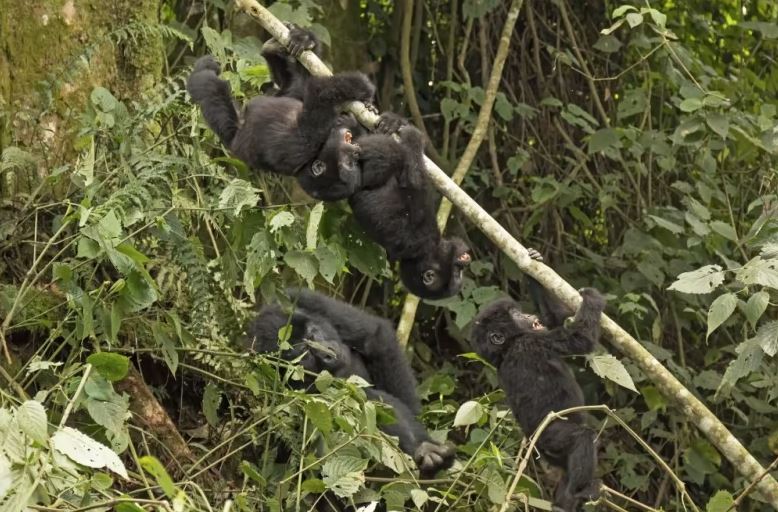
However, the reward of seeing wild gorillas more than outweigh the effort of reaching them – being with these incredible gentle giants is a truly profound experience.
Fascinating to watch, your permitted one-hour flies by as they carry on their daily business of playing, preening, eating, and sleeping, usually paying little attention to onlookers.
Youngsters swing in trees, chase each other, and laugh and squeal just like children. Mums dote on babies, suckling and cradling them, and big daddy silverback watches over them all.
What is gorilla habituation?
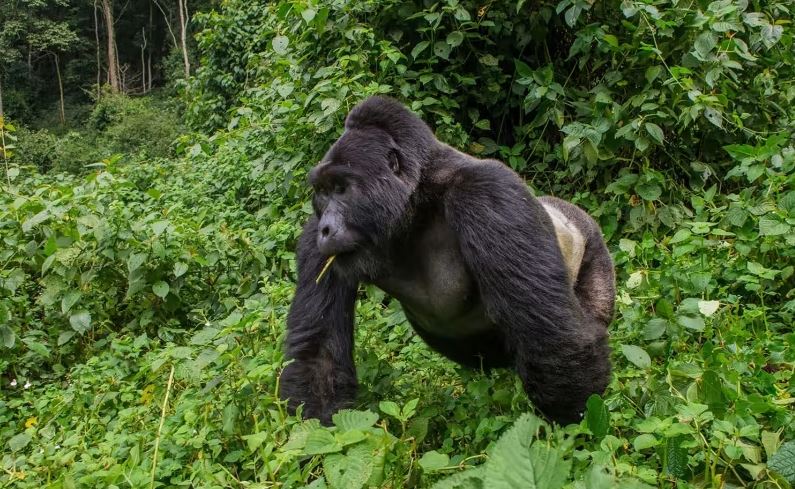
Gorillas are not always gentle in the presence of humans. It takes time and effort to achieve this relaxed, almost nonchalant attitude in a process known as habituation.
So, gorilla habituation is the process of gently introducing wild Mountain Gorillas to the sight and presence of people. Habituating gorillas is a painstakingly slow process that take 2 to 3 years. This might sound like a long time, but compared to chimpanzees, which can take 10 years to habituate, it’s a very fast process.
What is a gorilla habituation experience?
This exciting unique gorilla experience in Bwindi allows you to take part in the gorilla habituation process by tracking a group that is only semi-habituated.
During gorilla habituation, trackers visit wild gorilla families every day for around two to three years, gradually getting closer and spending longer in their company.
At the semi-habituated stage, the apes are familiar with trackers but not strangers. So, this new gorilla experience can now help them get used to seeing different people.
In regular gorilla trekking encounters, trackers have already found your gorillas and they take you directly to them. Instead, this 4-hour adventure starts from where the gorillas were last seen the previous evening.
You walk with the trackers, learning the tell-tale signs that eventually lead to the primates’ nests, such as knuckle prints in the mud, bent and broken vegetation and discarded food.
Gorillas set up new nests every night then move on looking for food: what they leave behind is vital for checking their health and numbers. At the nests, the team collects samples of hair and dung before continuing their search.
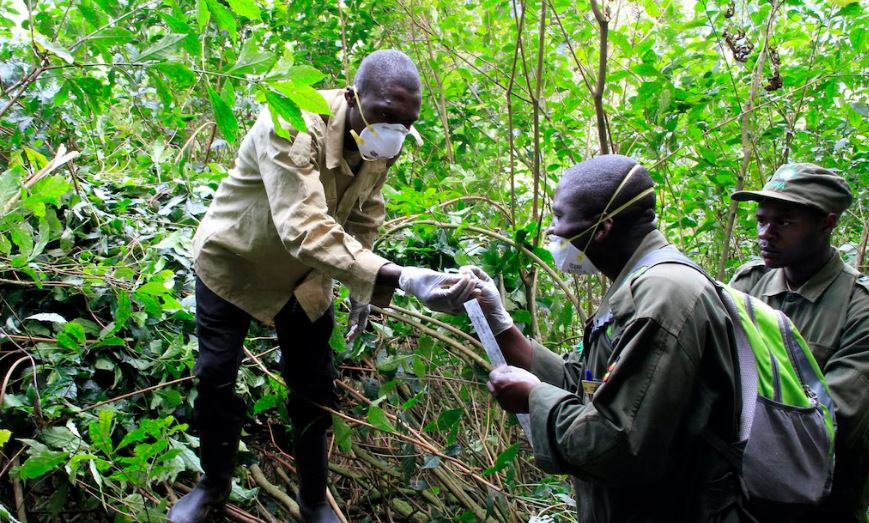
It’s only when you find the gorillas that the real challenge begins. The point of habituation is to follow the group and stay in their vision as they move, eventually getting closer to reach that magical 7m cut-off point.
How fit do I need to be?
A gorilla habituation experience usually involves a pretty taxing hike of a few hours, so you need reasonable fitness to cope.
Unlike fully habituated gorilla families who mooch around patiently during your permitted hour, these gorillas move fast to feed, dashing through dense rainforest, storming up and down slippery slopes and crawling on knuckles through bushes, with you and the tracker team in hot pursuit. So, it’s not for the unfit or fainthearted.
Is there an age limit?
Children below the age of 15 are not allowed to go on a gorilla habituation experience.
You may also like; Can children go gorilla trekking?
Is Gorilla Habituation Experience Safe?
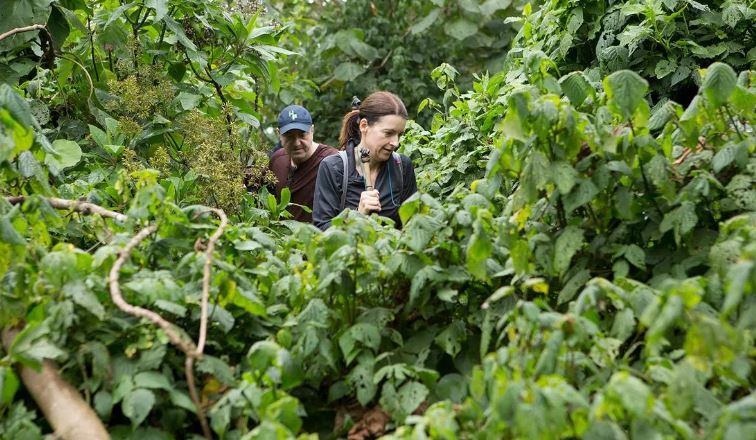
Yes, a gorilla habituation experience in Uganda is safe.
You should, however, note all gorillas are wild, but some are wilder than others. And these semi-habituated ones have an air of unpredictability about them. There is a heightened risk of the silverback gorilla charging. But it is almost always a warning rather than an attack.
Your trackers will have briefed you to stay calm, crouch down and avert your eyes. When they are still, you stay still, mimicking their behaviour to make them feel at ease.
You crouch down when they do, copy them picking up grass pretending to eat it, and talk to them in gorilla-language, a series of vocalizations that have specific meanings. To have a gorilla reply to your low throaty rumbling, signifying contentment, is utterly spine-tingling.
You may also like; Is gorilla trekking safe?
Is Gorilla Habituation ethical?
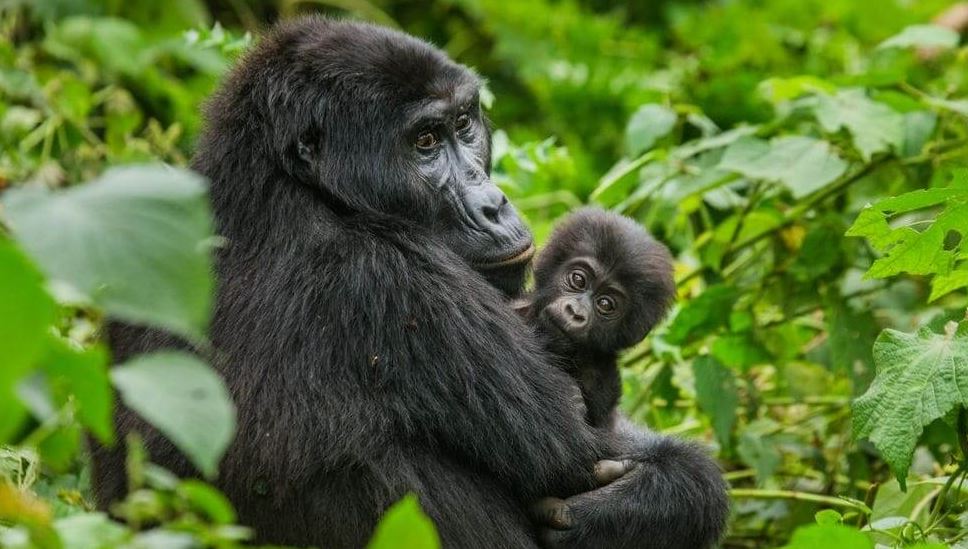
All things considered, yes, gorilla habituation and gorilla habituation experiences are ethical practices. I say this because the Uganda Wildlife Authority ensures that both are done in a well-considered manner, with the best interests of the gorillas in mind.
Also, gorilla habituation experience is offered at a high price. And the money generated is used in large part to further the conservation efforts of the highly endangered Mountain gorillas.
In an ideal world, gorillas would be left alone in the wild. But, the endangered primates require a concerted effort on the part of humans to protect their numbers from diseases, habitat loss, and poachers. With this need in mind, the thoughtful implementation of gorilla trekking tours and gorilla habituation experiences is overall a good thing.
Which Sector of Bwindi Offers Gorilla habituation experiences?
Bwindi Impenetrable National Park is consisting of 4 sectors. Each sector act as a self-standing gorilla trekking destination, has its own accommodation options and reached from a different approach from other sectors. Currently, gorilla habituation experience is offered in the Rushaga sector in the south (see the map below).
Gorilla trekking Vs Gorilla Habituation Experience: Which is the best?
Regular gorilla trekking tours, costing US$700 per permit at Bwindi (now US$1500 in Rwanda’s Volcanoes National Park), offers a virtual guarantee that you’ll see gorillas up close and personal in a relaxed, even docile, mood for one unforgettable hour.
The Gorilla Habituation Experience in Uganda costs US$1500, and lasts 4 hours. You may not get very close to the mountain gorillas and being in pursuit can be physically demanding and exhausting. You might similarly spend some time just watching them sleep, but you learn so much more about these awesome apes in this edgier and more immersive wildlife encounter.
Whichever option you choose, mountain gorilla trekking is extraordinary, evoking a deep connection with our closest genetic ancestors in a truly enriching and unforgettable experience.
What to Pack for the Gorilla Habituation Experience?
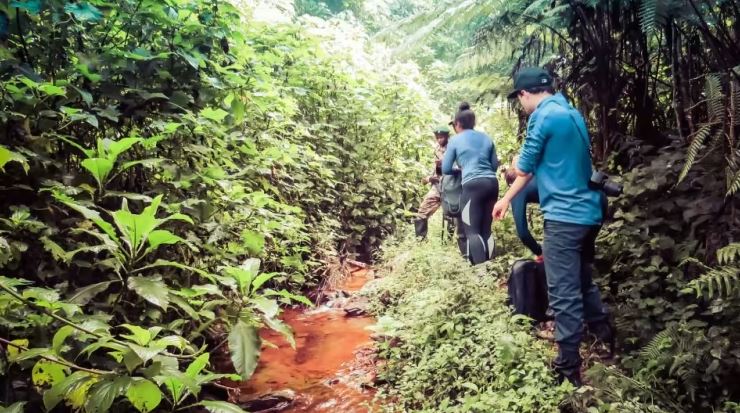
Your gorilla habituation experience packing list should include;
- Worn-in, sturdy and water-resistant hiking boots or shoes
- A long-sleeved top (bare arms invite insect bites and scratches)
- Gardening gloves to protect your hands when you grip or move aside vines, which can be thorny
- A sunhat and sunscreen, as the sun can be pretty fierce when the clouds clear
- Long pants to protect your legs from being scratched
- A rain jacket (it can rain even in the so-called dry seasons)
- Bottles of drinking water
- A camera
- A walking stick
- Insect repellents
- Some lunch and energy giving snacks
Best Time to Go for Gorilla Habituation Experience
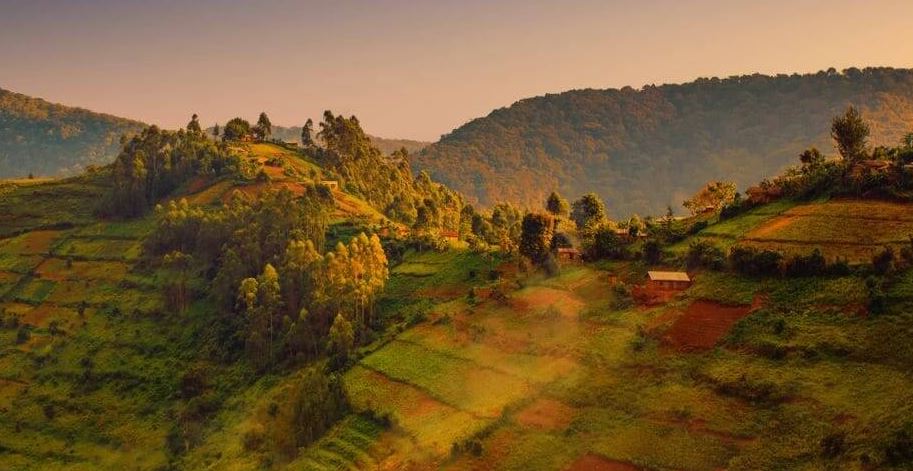
The gorilla habituation experience can be done year-round, but the two dry seasons, from June to August and again from December to February, are the best times to visit.
How to get to Bwindi?
There are 3 main ways to get to Bwindi Impenetrable Forest. The cheapest way is to drive from Entebbe or Kampala in Uganda or Kigali in Rwanda to the national park. The drive from Entebbe or Kampala to Bwindi National Park between 8 to 10 hours.
The drive from Kigali is shorter taking about 4 to 5 hours. The shortest and most convenient way to get to Bwindi Forest is to take a charter or scheduled flight from Entebbe or Kajjansi. The flight ends in Kisoro airstrip and takes one hour and a half. Once at the airstrip, you need to endure a 45 minutes’ drive to your lodge in Rushaga.
Where to Stay
Bwindi is a very large national park. You will need to find places to stay inside or near to Rushaga sector. This is so that you can make the early morning meeting time for the habituation experience.
There are budget, mid-range and luxury accommodation options available in this area. Note that you must present your passport when you arrive for your gorilla habituation experience. If you have a safari guide with you on your tour, he or she will make sure you are aware of and don’t forget important details such as this.
You may also like; best luxury Bwindi lodges
You Can Include Gorilla Habituation on these trips
Ready To Go For Gorilla Habituation Experience Safari?
Get in touch with us to start planning your adventure to see the endangered mountain gorillas.

